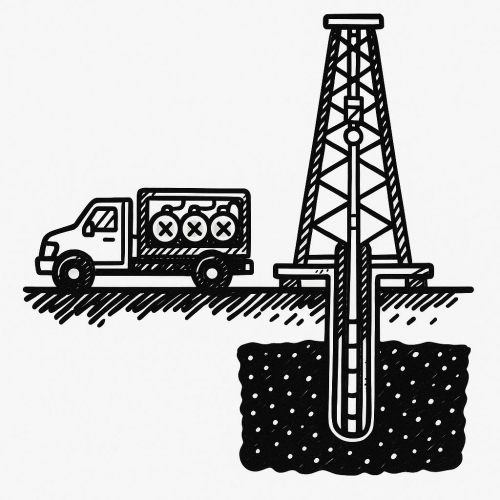What is Residual Saturation?
Residual saturation in oil and gas wells is the fraction of the pore space in a reservoir that is occupied by a fluid phase after it has been displaced by another fluid phase. This is typically oil or gas that remains in the reservoir after waterflooding or gas injection. Residual saturation is an important parameter in oil and gas production, as it determines how much oil or gas can be recovered from a reservoir.
Factors that Affect Residual Saturation
There are a number of factors that affect residual saturation, including:
- Rock type and properties: The type and properties of the reservoir rock, such as its porosity, permeability, and wettability, can have a significant impact on residual saturation.
- Fluid properties: The properties of the fluids involved in the displacement process, such as their viscosity and interfacial tension, can also affect residual saturation.
- Displacement process: The type of displacement process used, such as waterflooding or gas injection, can also affect residual saturation.
Measuring Residual Saturation
Residual saturation can be measured in a number of ways, including:
- Laboratory core flooding tests: Core flooding tests are typically performed on small samples of reservoir rock to measure residual saturation under controlled conditions.
- Well logging: Well logging tools can be used to measure residual saturation in situ. However, these tools are not always accurate, and their results must be interpreted carefully.
- Production data analysis: Production data analysis can be used to estimate residual saturation on a field scale. However, this approach is also subject to a number of uncertainties.
Reducing Residual Saturation
There are a number of enhanced oil recovery (EOR) techniques that can be used to reduce residual saturation and improve oil recovery from a reservoir. These techniques include:
- Waterflooding: Waterflooding is the most common EOR technique used to reduce residual oil saturation. Water is injected into the reservoir to displace the oil to the producing wells.
- Gas injection: Gas injection is another common EOR technique used to reduce residual oil saturation. Gas, such as carbon dioxide or nitrogen, is injected into the reservoir to displace the oil to the producing wells.
- Chemical injection: Chemical injection is an EOR technique that uses chemicals to alter the properties of the oil or reservoir rock to improve oil recovery. Chemicals can be used to reduce interfacial tension, increase oil viscosity, or wet the reservoir rock with oil.
Conclusion
Residual saturation is an important parameter in oil and gas production, as it determines how much oil or gas can be recovered from a reservoir. There are a number of factors that affect residual saturation, including rock type and properties, fluid properties, and displacement process. Residual saturation can be measured in a number of ways, including laboratory core flooding tests, well logging, and production data analysis. There are a number of EOR techniques that can be used to reduce residual saturation and improve oil recovery from a reservoir.

%20(1).png)



